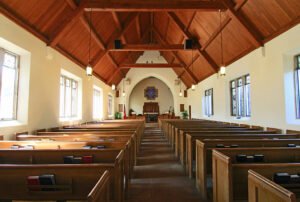
September 18, 2019; Washington Post
Much has been written about Detroit’s economic decline and the accompanying exodus of 61 percent of its population between 1950 and 2010. A complex set of generational factors is often cited, including a lack of economic diversification, the impact of racial tensions, and an epic series of leadership failures. These, together with limited investments in public infrastructure and mounting public financial commitments, led the city in 2013 to file for the largest municipal bankruptcy in US history: $18 billion.
The impact of decades of decline is as pervasive today as ever before. The poverty rate is nearly three times the national average at 35 percent, and despite increases in median household income, Detroit remains the nation’s poorest big city according to the US Census’s American Community Survey. Perhaps nowhere is the city’s decline more apparent than in the built environment, where, out of the 139 square miles the city encompasses, a total of 40 percent is characterized by vacant lots or abandoned properties. This amounts to 100,000 vacant lots and around 80,000 vacant housing units.
However, in the midst of decay and uncertainty is where innovation emerges.
Despite the array of factors working against economic and community growth in Detroit, the city’s resilience is marked by a unique set of asset-based revitalization strategies. Perhaps no other strategy is more appealing or inherently beneficial than using one of the city’s perceived liabilities as an asset for renewal: its abandoned lots and houses.
Many readers are familiar with the concept of using vacant lots for projects such as community gardens, pocket parks, and public art. In Detroit, however, the sheer scale of vacant lots and properties offers an unparalleled opportunity for reimagining community, a once-in-a-century grassroots experimental laboratory for civic regeneration. And nonprofits in the region are playing a significant role in leveraging these assets for their missions, while at the same time contributing to the story of rebirth of one of the nation’s most fascinating cities.
One such organization is Detroit Hive, a nonprofit whose mission is to transform vacant lots into bee farms for the conservation of honeybees, to help spread bee awareness, and to educate communities and local schools about bees and their contribution to the environment.
Sign up for our free newsletters
Subscribe to NPQ's newsletters to have our top stories delivered directly to your inbox.
By signing up, you agree to our privacy policy and terms of use, and to receive messages from NPQ and our partners.
This nonprofit started with a microgrant from Detroit SOUP, a community-based philanthropic organization that was featured in an NPQ newswire last November. This foundational grant jumpstarted the nonprofit by financing the purchase of three hives, which were placed on three adjacent vacant lots totaling 5,000 square feet. According to Marisa Iati of the Washington Post, Detroit Hive has since expanded to 35 hives on a total of nine vacant lots, schools, and community gardens across the city. Its goal is to have 200 hives on 45 vacant lots, offering an environmentally-based enterprise and cultivating its own version of a pollinator pathway. Through providing homes to honeybees on vacant lots, Detroit Hive has blossomed into a vibrant nonprofit that is part education center and part social enterprise. Currently, it produces an astonishing 300 pounds of honey annually.
Detroit Hive is not alone in its utilization of vacant lots and abandoned homes as critical resources to fulfill their mission. In fact, Detroit is teeming with nonprofit organizations that are taking advantage of the thousands of properties and lots that are available.
For example, the nonprofit Detroit Horse Power focuses on teaching urban youth to ride and care for horses as a way to develop critical skills that will set them up for future success. The nonprofit plans an urban equestrian center that will be built on a re-purposed vacant lot in Detroit. Other organizations, like LifeBuilders, are dedicated to fighting blight through restoring 100 abandoned homes and thereby reclaiming their neighborhood, while involving youth and fighting generational poverty through job training and education.
In addition to nonprofits like these, other entities are advocating for nonprofits, faith-based organizations, and community development entities to reuse abandoned property. The Detroit Land Bank Authority, for example, has a Community Partnership Program where nonprofits have the opportunity to access abandoned lots or properties for community projects. To date, dozens of nonprofits, as well as churches, have taken advantage of the Community Partnership Program and have developed programs ranging from urban gardens to historic preservation projects.
As one examines the use of vacant lots and properties in Detroit, there’s a growing sense these spaces are being used as a leverage point for a citywide, asset-based community development revitalization strategy. For instance, in tandem with efforts described above, the city of Detroit’s Planning Commission released Zoning Analytic, a draft of revised zoning ordinances resulting from a two-year process. Some of the proposed revisions focus on zoning that can stimulate job opportunities through using vacant parcels for uses like urban farming, stormwater management, non-motorized trails, and solar farms.
In addition to the new zoning ordinances being released this month, appropriately enough, this newswire is being published at the beginning of Community Development Week in Detroit, a celebration of various community development initiatives throughout Detroit. Hosted by the Community Development Advocates of Detroit (CDAD), the week offers several events where community members can learn about different ways that people, businesses, and nonprofits are reimagining their city.
Taken together, the activities described here illustrate ways nonprofits contribute to the creative renewal of cities. In Detroit, the nonprofit sector is partnering with community development professionals to advance placed-based strategies for revitalization. As these efforts take root and evolve, nonprofits throughout the country should diligently observe how these strategies are addressing economic decline, repurposing discarded neighborhoods, and reviving the once-forgotten streets of America’s Motor City.—Derrick Rhayn












